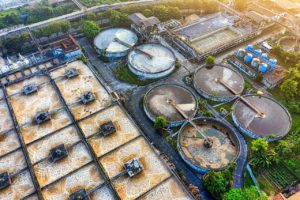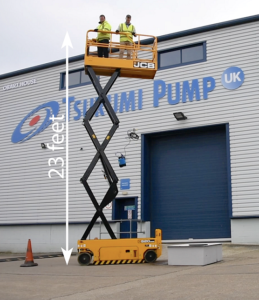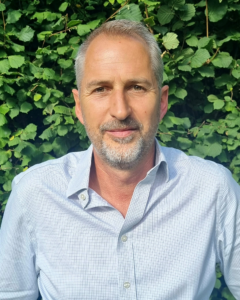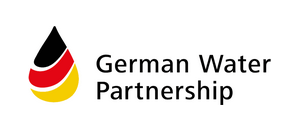Variable Speed Pumps for Mars Plant in Europe
One of the world's largest and best known snack foods and candy manufacturers, the Mars Corporation, has installed a new hot water circulation system at their main Mars plant for Western Europe. The operating speeds of system's pumps are controlled by the Hydrovar, pump-mounted, frequency control units from ITT Industries' Lowara pump unit, which have provided great benefits in the form of flexibility of use and very significant energy savings.
On a visit to the local drugstore in 1922, the founder of Mars, Frank Mars, and his son, Forrest, had an original idea: to produce a portable version of a chocolate malted milk The MILKY WAY bar –known in Europe as the MARS bar - was an immediate success and together with other famous brands like SNICKERS and M&M's, has been the founda-tion of a global snack food business and a global brand name. In common with most major companies in the world, the Mars BV fac-tory at Veghel in Holland, pursues an active policy to reduce the impact of its opera –tions on the environment. The reduction of energy use is a major part of this policy and significant savings have been achieved by investing in a microprocessor-controlled, vari-able speed central hot water circulating system. The newly installed system needs to be pressurized to a con-stant 5.5 bar and to maintain this pressure despite varying usage from a number of points around the ring of piping that circulates the hot water. Having already had the expe-rience of using Hydrovar pump controllers for a fire extin-guishing circuit at the plant, utilities manager Harry Klerkx had no hesitation in specifying the latest Hydrovar package for the critical hot water system. Harry Klerkx explains that, "We decided to install a central hot water system when the municipal water authority changed its source sup-ply."
"They started drawing water from aquifers with harder water; 8 - 10 deutz instead of the 5 deutz which we'd been used to." Klerkx continued, "The increased calcium and magnesium in the supply caused deposits in our heat exchangers, which had to be de-scaled every four weeks. With a central circulating hot water system, we could install a single, ioniza-tion water softener at a single inflow to the plant." (This system replaces the calcium and magnesium ions with sodium ions.) "In addition to sugar dis-solving for production this softened water is now also available throughout the plant for equipment cleaning purposes." A new central buffer tank was also installed to guarantee constancy of supply Constant Duty
Like many process plants which need to maintain precise temperatures for operational efficiency, the Mars factory operates 24 hours a day for seven days a week. It produces 170,000 tons of finished products per year - the well-known Mars range of confectionery, which must have unvarying top quality - and 35,000 tons of semi-finished products, which go onto further processing.
The hot water to maintain this output is heated by heat exchangers, powered by two natural gas fired steam boilers, to about 90 degrees C. It is used mainly for a sugar solution which is processed in regular batches in dissolving tanks. A
separate Lowara SV Series stainless steel 316 pump and pipe system is used to fill each tank in 3 - 5 minutes. All factories, which make products for human consumption,
are kept scrupulously clean and the Veghel plant is no excep-tion. This requires intermittent use of hot water throughout the plant and this demand is superimposed on the pattern of process water demand. Heart of the System At the heart of the new system is a four-pump booster sta-tion under Hydrovar microprocessor control, which not only
maintains the necessary pressure but is also capable of a maximum flow of 30 cu m per hour. These requirements are met with a technology , which can result in electricity savings of some 70 per cent compared with other methods of water
supply. A significant advantage is that pump monitoring and control can be included in the plant's main display panel, which means that the whole plant can be overseen from a
single point. The Hydrovar is also renowned for its reliability and ease of operation.
A unique feature of the Hydrovar is its application in multi-pump systems, as at the Veghel Mars plant. The only extra installation work is for each pump in the system to be con-nected with an interface cable to its neighbour and for the pumps to be named so that the microprocessors can identi-fy each pump. Hydrovar can be retrofitted to existing multi-pump systems and it can include a friction loss compensation system.
The multi-pump system is usually available for four units and it ensures a step-less transition between each pump coming to maximum speed and the next one starting. Uniquely to Hydrovar, built-in redundancy ensures that if any component
on any one pump fails, for example sensors, inverter or microprocessor, the other three can maintain system pressure and avoid breakdown. Alternative Options Constant speed pumps are cheaper and it would have been possible to use one or more to maintain adequate circulation in the hot water circuit. However, to ensure that each station could have water at the required pressure, an additional pump, delivering 5.5 bar, would have been necessary. Harry Klerkx comments that, "the total cost of the installation would have been far higher than the four-pump booster sta-tion,
with Hydrovar control, which we actually installed." In addition, the circuit pump would have been driving water at a speed necessary to satisfy the highest forecast demand
whether in fact that demand was there or not. At low fluid flow speeds the head lost by friction is proportional to the velocity but at high fluid speeds the lost head is proportion-al
to the square of the velocity. Constant running would therefore have used large amounts of energy in circulation as well as the energy used by each delivery pumps
Other options could have included controlling the flow of the circulating pump either by throttling the discharge or by returning the excess flow to the suction side of the pump. A
by-pass could have reduced the flow to the pump but this would have induced cavitation in the impeller causing addi-tional wear. Hydraulic accumulators could have been used to
absorb excess flow and store it under pressure; these are expensive, take up space, have limited capacity, and seldom produce a smooth and constant flow. All these solutions
would have been energy-hungry.
Future Planning Harry Klerkx was considering the future when he specified Lowara pumps equipped with Hydrovar control; he has plans for additions to the system. Firstly, the circuit could be used to provide water for a new system to hydrate milk powder. Secondly, additional heat exchangers, taking heat from the central hot water system, are being considered for various locations around the plant.
Energy Efficiency
The Veghel Mars plant, which employs 1300 people, has had a constant falling energy consumption over the last five years despite increased automation which usually raises energy demand. The new hot water circulation plant was one phase of an ongoing program of plant upgrading. Cooling systems have been fitted with variable speed compressors, generat-ing savings of about 10 per cent. Air conditioning units are
centrally controlled and monitored thus allowing direct access to the control function and an increase of efficiency. Variable speed fans have been fitted in the air conditioning
systems supplying the office accommodation; these have an automatic low speed night setting which have generated savings of at least ten per cent.
About LOWARA
Lowara Srl Montecchio Maggiore, Vicenza, (www.lowara.com) which is part of the ITT Industries group, is a leader in the manufacture of hydraulic pumps and water handling and control systems. It has 900 employees in Europe, 730 operating in Italy. In 2000 its consolidated sales totalled over 150 million dollars, or over 300 billion lire. ITT Industries, Inc. (www.itt.com) is a global, multi-industry company with leading positions and advanced technologies in its served markets. The company reported revenues of $4.8 billion in 2000 from its four segments: Connectors & Switches, Defense Products & Services, Pumps & Complementary Products and Specialty Products.ITT Industries employs approximately 38,000 people around the world. In addition to the New York Stock Exchange, ITT Industries' common stock is traded on the Midwest, Pacific, London, Frankfurt and Paris exchanges.
Source: Xylem Inc.







